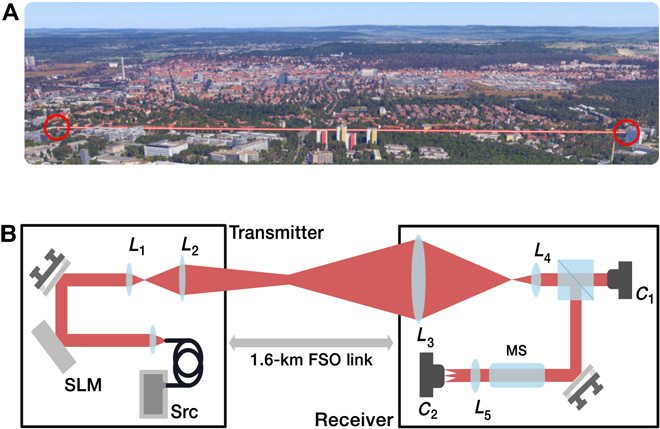Scientists just found a way to transmit data way faster by using ‘twisted’ light.
Fiber optic cabling is considered as the fastest form of data transmission available today. However, the high price and complex deployment that comes with using fiber optics keep this innovation from reaching more people. In fact, even tech giants like Google have difficult times building their consumer base because of these hindrances.
But now, the future of data transmission might change for the best more quickly, thanks to a team of researchers from United Kingdom, Germany, New Zealand, and Canada. According to reports, scientists found a way to transmit data without the use of cables. Apparently, the team made use of ‘twisted light‘ to efficiently transmit wireless data.
So, what is twisted light and how could it change the future of data transmission?
Researchers discovered that twisted light could be used to transmit data!Click To TweetTwisted Light: How Scientists Twisted Photons
New research into ‘optical angular momentum (OAM) suggests that existing difficulties with using twisted light in open spaces could be fixed.
Optical angular momentum or orbital angular momentum is the component of angular momentum of a light beam that is dependent on the field spatial distribution and not polarization. By letting photons (individual particles of light) pass through a special type of hologram, something similar to that on a credit card, the photons acquire OAM and become twisted.
Now, the numerous intertwined twists in the twisted photons allow them to carry additional data. This is a far cry from the photons found in current digital communications which use only ones and zeroes to transmit information.
The capability of twisted light to carry extra information could only mean one thing: optical angular momentum could potentially be used in creating higher-bandwidth communications technology.
But, while OAM has already been used to carry data through cables, transmitting twisted light across open spaces is no easy feat.
Scientists must take into consideration several factors such as the changes in atmospheric pressure of open spaces that could affect and scatter the light beams, potentially causing the loss of spin information.
To guarantee the efficiency of the technology, the researchers tested it over a 1.6-km long free-space link in Germany, ensuring that it would pass through fields and streets near skyscrapers to simulate an urban setting and the atmospheric turbulence that affects spatial information transfer.

The field test yielded new challenges that could help scientists improve the technology before making it commercially available. In a paper published by the researchers in the journal Science Advances, Dr. Martin Lavery, head of the Structured Photonics Research Group at University of Glasgow and lead author of the study, was quoted as saying:
“In an age where our global data consumption is growing at an exponential rate, there is mounting pressure to discover new methods of information carrying that can keep up with the huge uptake in data across the world.
A complete, working optical angular momentum communications system capable of transmitting data wirelessly across free space has the potential to transform online access for developing countries, defense systems, and cities around the world.”
Dr. Lavery went on to say that free space optics is a potential solution that could give us the bandwidth of fiber without the need for physical cables.
“This study takes vital steps forward in the journey towards high dimensional free space optics that can be a cheaper, more accessible alternative to buried fibre optics connections.”
The researchers also added that with this new development in OAM, scientists could now re-think their approaches to channel modeling and adaptive optics systems.
The study conducted by Dr. Lavery and his colleagues from the Max Planck Institute for the Science of Light and Institute of Optics, and the University of Otago, the University of Ottawa, and the University of Rochester addresses the challenges associated with developing adaptive optics for quantum information transfer that were not observed before.
Experts deem this latest discovery as a giant step towards a new age of free space optics that could someday replace fiber optic cables as the most functional mode of data transmission in urban environments and remote sensing systems.



















Comments (0)
Most Recent